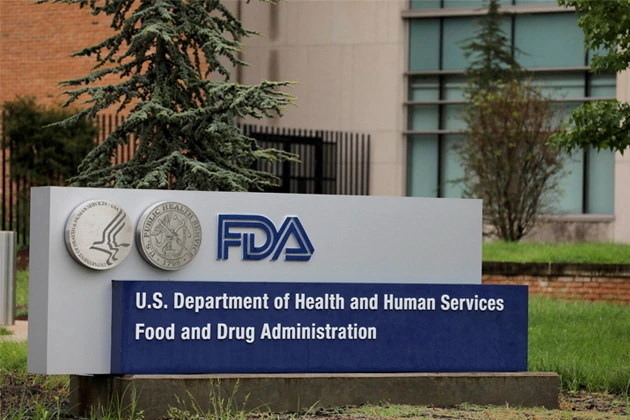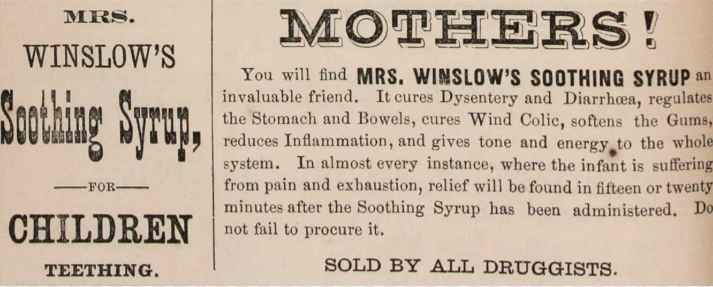Protecting public health is imperative for any government, a mission best accomplished by a dedicated regulatory body overseeing the quality and supply needs of food and drugs throughout a country. In the United States, the Food and Drug Administration(FDA) was established with the purpose of championing public health. Since its establishment in 1906, this food and drug regulatory body of the country has been contributing to the safe consumption of food and drugs by the American population. By introducing strict guidelines and implementing rigorous testing procedures, this consumer protection agency ensures that food manufacturers and pharmaceutical companies deliver quality and safe products for consumption.
With this article, we intend to understand the extensive role of the US Food and Drug Administration in facilitating safe food and drug practices in the country. In this context, we trace back its history and evolution over the years.
A History of Consumer Protection and Responsible Food and Drug Manufacturing
Established to protect the consumers from adulterated and misbranded food and drugs, the organization’s role now extends beyond that. Supported by approximately 9100 people, the Food and Drug Administration is the oldest comprehensive consumer protection agency in the US. The federal government has used chemical analysis to observe the safety of agricultural products since 1848. This responsibility was inherited by the Department of Agriculture in 1862 and later by the agency itself.
The US Food and Drug Administration was first established to enforce the Pure Food and Drug Act of 1906. It is endowed with the responsibility to protect the health of the US public, ensuring the quality of food, cosmetics, and medicine. Prior to the establishment of the agency, the US government had no formal governing body for these products, and inspecting the quality and purity issues for them was done by individual manufacturers or individual states.
This was not much of a concern for many initially. However, as the American population started to increase and more people moved into cities for work, the need for pre-made goods also increased, as city dwellers could not produce them. Once these products gained popularity, issues concerning product safety started surfacing.
Upton Sinclair’s ‘The Jungle’ (1906) report was one of the most famous reports that highlighted the awful working conditions in a Chicago meatpacking plant. The plant was accused of selling canned, rotten meat and poisoned rats. As issues like this were reported from different places in the country, the US government was compelled to pass the Pure Food and Drug Act in 1906.
Over time, the Act has evolved and been amended. Today, the agency has emerged as the major government agency responsible for overseeing prescription medicines.
The Timeline of the Food and Drug Administration: An Evolution
Having a closer look at the timeline below, we can learn more about the legislative acts, people, and legal cases that contributed to the evolution of this agency.
1883: The Era of Dr. Harvey W. Wiley
1883 is noteworthy for the development of the Food and Drug Administration. During this year, Dr. Harvey W. Wiley became the US Chief Chemist and expanded the US Bureau of Chemistry for food adulteration research. As a committed advocate for federal regulations, he was dedicated to ensuring the safety and quality of food and medicine across the country. His convictions led him to become the “Father of the Pure Food and Drugs Act” and “Crusading Chemist.” He laid the foundation for the development of the Food and Drug Administration in the country.
1906: The Era of the Food and Drugs Act
Image Source: University of Washington Special Collections
Congress passed the original Food and Drugs Act in 1906, on 30th June, and President Theodore Roosevelt signed the bill. The Act was enforced to prohibit the interstate commerce in adulterated and misbranded food and drugs. Wiley remained a driving force behind the law in its early years. Before the enforcement of this Act, medications like Mrs. Winslow’s Soothing Syrup for teething and colicky babies did not require disclosure that the syrup contained morphine and alcohol.
1911: A Loophole in the Food and Drug Act
Since the enforcement of this Act, the FDA has evolved with social, economic, legal, and political changes in the US. In 1911, the Supreme Court discovered a loophole in the Pure Food and Drug Act. When the legal case of Us vs. Johnson ruled that the 1906 FDA did not prevent false therapeutic claims, but only false and misleading statements about drug ingredients.
1912: The Sherley Amendment
In 1912, Congress enacted the Sherley Amendment to overcome the conflict between the US and the Johnson. It provided language that prevented the intentional labeling of medication bottles or packaging with false therapeutic claims. For example, due to the Sherley Amendment, the FDA could prosecute the manufacturers of Mrs. Winslow’s Soothing Syrup for their continued false advertising about the curative effect of the product.
1914: The Era of the Harrison Narcotic Act
According to the Harrison Narcotic Act, it requires prescriptions for products that exceed the allowed limit of narcotics and mandates escalation of record-keeping for physicians and pharmacists dispensing narcotics.
1937: The Killer Elixir of Sulfanilamide, Accelerating the Need for Drug Safety
With the poisonous Elixir of Sulfanilamide, containing solvent diethylene glycol, which killed 107 persons in the United States, Americans understood the need for ensuring drug safety before marketing and enacting the pending Food and Drug legislation.
1938: The Introduction of the Federal Food, Drug, and Cosmetic (FDC) Act
Congress passed the Federal Food, Drug, and Cosmetic Act of 1938 to strengthen the regulatory authority of the FDA. According to the new provisions of the Act-
- FDA’s extended oversight encompasses cosmetics and therapeutic devices.
- It mandated that safe tolerance should be set for unavoidable poisonous substances.
- The Act authorized factory inspections.
- It further mandated that new drugs must be proven safe before being sold and before they are advertised.
- The FDC Act empowered the FDA to prosecute responsible manufacturers for faulty production.
1941: Enactment of the Insulin Amendment
In 1941, the Insulin Amendment was carried out. It authorized the FDA to test and certify the effectiveness and purity of lifesaving drugs to treat diabetes.
1951: The Introduction of the Durham-Humphrey Amendment
The Durham-Humphrey Amendment of the US Food & Drug Act came into effect in 1951. It defined the types of medications that are prohibited for safe use without medical supervision. This amendment further mandated that certain drugs should be made available only by prescription.
1962: The Year of Greater Safety for the FDA
The Kefauver-Harris Drug Amendments ensured medication efficiency and greater safety in 1962. For the first time, drug manufacturers were required to prove the effectiveness of their products to the FDA before advertising. With the new sleeping pill Thalidomide, identified to be causing birth defects in thousands of babies born in Western Europe, the FDA medical officer, Dr. Frances Kelsey, was credited for banning the launch of the drug in the US market, increasing public support for the FDA and its strict drug regulation. President John F. Kennedy also established the Consumer Bill of Rights, which included the right to safety, the right to choose, the right to be heard, and the right to be informed.
1970: The first Patient Package Insert
This year marks the FDA’s insertion of the first patient package in its regulations. It mandated that oral contraceptives must contain information for the patient about possible risks and benefits. For the first time, the FDA empowered patients by directly mandating that crucial information must be provided with the prescribed medication.
1997: The FDA Modernization Act
The 1997 FDA Modernization Act was a key milestone in the legislative landscape of the FDA, meant to reform the regulation of medical products, food, and cosmetics. For instance, the Act increased patient access to promising experimental drugs and medical devices. It included a rapid review process for important new medications. Furthermore, the legislation allowed drug companies to research unapproved uses of approved medications. This Act was enforced to advance the scientific research for the safety and efficacy of specific medications.
2011: The Launch of Prescription Drug Promotion
This year, the FDA opened its Office of Prescription Drug Promotion (OPDP). The OPDP is responsible for overseeing prescription drug advertisement activities by looking for and taking action against advertisements that violate the law. Apart from medications, food safety is ensured by the Food Safety Modernization Act (FSMA) in 2011. Under this Act, the FDA sets science-based standards for the safe production and harvesting of fruits and vegetables to reduce contamination.
2022: The Era of the Modernization of Cosmetics Regulation Act (MoCRA)
In 1938, the FDC Act granted the FDA authority, and the MoCRA substantially expanded that authority by introducing new requirements for cosmetic companies and FDA oversight. Signed in December 2022, this law vested the FDA with new powers for facility registration, adverse event reporting, product listing, and ensuring the safety of cosmetic products.
The story of the FDA is one of a government agency dedicated to the health and well-being of the USA, from the efforts of Dr. Wiley in 1883 to the Food Safety Modernization Act of 2011. With its continued evolution, the regulation of medication, food, and cosmetics, and their advertisement has also transformed.
At The CEO Views, we captivate our readers with a wide array of topics, from the FDA’s impact on US food and drug safety to the latest industry breakthroughs. Our articles, blogs, news, and features are crafted to spark connections among industry leaders, delivering fresh insights on trends, innovation, technology, and the ever-evolving business landscape.











